The titles listed below are available for loan to graduate students, medical students, post-doctoral fellows, research associates, and primary or secondary faculty affiliated with the Department of Molecular Genetics.
To borrow a book, please email kristin.thole@duke.edu stating the book title and the length of time you would like to borrow it.
This library is separated by category. To search by keyword, press Ctrl+F and enter your term.
Bacterial Pathogenesis
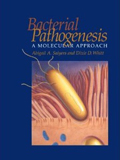 Bacterial Pathogenesis: A Molecular Approach
Bacterial Pathogenesis: A Molecular Approach
1st Edition
Abigail A. Salyers (Author), Dixie D. Whitt (Author)
This textbook brings together advances in the understanding of how bacteria cause disease. Research has changed the way scientists view host-bacterium interactions. The interactions involve immunology, cell biology, human and bacterial physiology, molecular biology and genetics. The six introductory chapters provide the scientific background necessary for exploring the bacterial diseases covered in the book. Through studying the bacteria and diseases presented, the book aims to help students gain knowledge of host-parasite interactions, and examine a range of epidemiological and therapeutic problems.
 Chlamydia: Intracellular Biology, Pathogenesis, and Immunity
Chlamydia: Intracellular Biology, Pathogenesis, and Immunity
1st Edition
Richard S. Stephens (Editor)
This book reviews the past 10 years of chlamydial research. Material is organized by discipline, allowing for comparison and integration of issues across all chlamydial species. Highlights include discussion of identification of a new emerging chlamydial pathogen, and the completion of genome sequences. Other subjects are cell biology, infection and disease epidemiology, mechanisms of disease, and models of immunity. Material originated at a June 1998 symposium. The editor is affiliated with the School of Public Health at UC-Berkeley, and with the Francis I. Proctor Foundation at UC-San Francisco. Annotation c. Book News, Inc., Portland, OR (booknews.com)
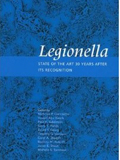 Legionella: State of the Art 30 Years After Its Recognition
Legionella: State of the Art 30 Years After Its Recognition
1st Edition
Nicholas P. Cianciotto (Editor), Yousef Abu Kwaik (Editor), Paul H. Edelstein (Editor), Barry S. Fields (Editor), David F. Geary (Editor), Timothy G. Harrison (Editor), Carole Berotte Joseph (Editor), Rodney M. Ratcliff (Editor), Janet E. Stout (Editor)
This book summarizes the presentations given at the International Conference on Legionella (Chicago, October 2005). It presents an authoritative review of current Legionella research and examines its continued impact on public health. This work offers an authoritative review of the most current Legionella research that covers all aspects of Legionella; features 131 chapters, including large reviews and small research reports, all including references; and, includes contributions from the leading experts in the field.
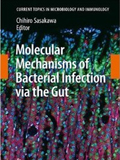 Molecular Mechanisms of Bacterial Infection via the Gut
Molecular Mechanisms of Bacterial Infection via the Gut
1st Edition
Chihiro Sasakawa (Editor)
The authors of this book offer an overview of the current topics related to major gastric and enteric pathogens, while highlighting their highly evolved host (human)-adapted infectious processes. Clearly, an in-depth study of bacterial infectious strategies, as well as the host cellular and immune responses, presented in each chapter of this book will provide further insight into the critical roles of the host innate and adaptive immune systems and their importance in determining the severity or completely preventing infectious diseases. Furthermore, under the continuous threat of emerging and re-emerging infectious diseases, the topic of gut-bacteria molecular interactions will provide various clues and ideas for the development of new therapeutic strategies.
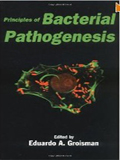 Principles of Bacterial Pathogenesis
Principles of Bacterial Pathogenesis
1st Edition
Eduardo A. Groisman (Editor)
This book presents a molecular perspective on the general principles of bacterial pathogenesis, paired with detailed discussions on a select group of bacterial pathogens of humans. This comprehensive treatise presents contributions by 36 leading experts in the fields of molecular microbiology and microbial pathogenesis and provides broad coverage of bacterial pathogenesis in a clear and authoritative manner.
The introductory chapters of Principles of Bacterial Pathogenesis discuss aspects common to different pathogens including their evolution, the secretion and regulation of virulence determinants, and a thorough description of strategies for the identification of virulence determinants. The book is balanced by additional chapters devoted to detailed treatments of the best characterized bacterial pathogens of humans including Shigella, Salmonella, Listeria, Neisseria, and Helicobacter pylori. Each of these chapters offers an overview on the pathogen and disease symptoms before presenting the molecular biological analysis of bacterial infection. This approach, along with the inclusion of informative figures and tables, makes the text accessible to the uninitiated and useful to experts in the field.
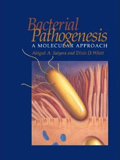 Bacterial Pathogenesis: A Molecular Approach
Bacterial Pathogenesis: A Molecular Approach
2nd Edition
Abigail A. Salyers (Author), Dixie D. Whitt (Author)
Completely revised and updated to capture new research findings and the new perspective on the host-parasite interaction, the Second Edition of this best-selling text is designed to provide a comprehensive introduction to bacterial pathogenesis for both students and researchers. The authors integrate material from pathogenic microbiology, molecular biology, immunology, and human physiology to provide a complete but accessible overview of the field.
Bacterial Pathogenesis, Second Edition, includes two new features. Key Features at the beginning of each chapter in Section II provide a short snapshot of the organism(s) covered. These snapshots present the organisms as intact entities associated with a particular disease while the detailed material is presented in the text of the chapter. In addition, the summary sections at the end of each chapter have been reformatted and now present the information as outlines and tables, an arrangement that is more useful to students.
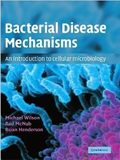 Bacterial Disease Mechanisms: An Introduction to Cellular Microbiology
Bacterial Disease Mechanisms: An Introduction to Cellular Microbiology
1st Edition
Michael Wilson (Author), Rod McNab (Author), Brian Henderson (Author)
This introductory textbook explores bacterial disease mechanisms and bacteria-host interactions. The central premise is that bacteria have evolved by means of manipulating normal host cell functions and overcoming host defense systems to ensure their survival. As well as offering a new perspective on the classical bacterial virulence mechanisms, this book outlines the new molecular techniques developed to unravel the complexity of bacteria-host interactions. Current research may lead not only to a better understanding of disease mechanisms, but also to new means of preventing and/or treating bacterial infections.
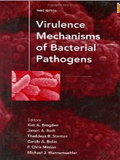 Virulence Mechanisms of Bacterial Pathogens
Virulence Mechanisms of Bacterial Pathogens
3rd Edition
Kim A Brogden (Editor), James A. Roth (Editor), Thadddeus B. Stanton (Editor), Carole A. Bolin (Editor), F. Chris Minion (Editor), Michael J. Wannemuehler (Editor)
The field of bacterial pathogenesis has held fascination for a diverse group of scientists since the time of Louis Pasteur and Robert Koch. The scientific revolution spurred by molecular biology has given immeasurable impetus to this area of research and has led to an avalanche of new information. The driving forces underlying this research are a natural curiosity to discover the strategies used by bacteria to subvert immune defences and cause disease, combined with the hope that improved understanding of these strategies will give rise to rational interventions to treat and prevent infectious diseases.
‘Virulence Mechanisms of Bacterial Pathogens’ is the third in a succession of monographs that originated from a series of symposia on this topic. This edition resulted from the International Symposium of Virulence Mechanisms of Bacterial Pathogens, which was held in Ames, Iowa from the 13–15 September, 1999. Previous editions of this title were published by ASM Press in 1988 and 1995, as a result of similar symposia held in 1987 and 1994. This book is not a record of the conference proceedings, however. Rather, it is a collection of reviews, which together are intended to provide an overview of current knowledge of the mechanisms used by bacterial pathogens to establish infection, produce disease and persist in the host, with an emphasis on the mechanisms of host–pathogen interactions.
Biochemistry
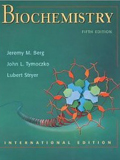 Biochemistry
Biochemistry
5th Edition
Jeremy M. Berg (Author), John L. Tymoczko (Author), Lubert Stryer (Author)
With new co-authors Jeremy Berg and John Tymoczko,Biochemistry, 5th edition has expanded integration of evolution, more chemical and structural insights, and a web-based media component created simultaneously with the text. Improved pedagogy includes: chapter opening outlines, expanded end of chapter problem sets, new types of problems, and special icons highlighting evolutionary coverage, clinically relevant material, or related media content on the Web. Biochemistry also becomes the first text to fully reflect the revolution that has taken place in biomedical science in the past ten years, culminating in the human genome project. A key focus of the new edition is the unifying features of protein structure and function that have been revealed by the incredible progress in gene sequencing. All molecular diagrams have been recreated by Jeremy Berg for clearer and more consistent presentations of structure throughout, with the art programme being increased by nearly 20 per cent over the previous edition. The new author team has also worked to maintain the book’s defining feature: the characteristic clarity.
Cancer Biology
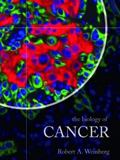 The Biology of Cancer
The Biology of Cancer
1st Edition
Robert A. Weinberg (Author)
The Biology of Cancer is a textbook for undergraduate and graduate biology students as well as medical students studying the molecular and cellular bases of cancer. The book presents the principles of cancer biology in an organized, cogent, and in-depth manner. The clarity of writing and the lucid full-color art program make the book accessible and engaging. The information unfolds through the presentation of key experiments which give readers a sense of discovery and provides insights into the conceptual foundation underlying modern cancer biology.
The Biology of Cancer synthesizes the findings of three decades of recent cancer research and proposes a conceptual framework from which to teach about these discoveries. It provides the necessary structure, organization, and content for a course on cancer biology for advanced undergraduates and beginning doctoral students. The book is comprehensive and offers many pedagogical features to assist teaching and learning. The book includes many recent and topical references, and is intended to empower the student to move directly into the primary research literature.
The text is up-to-date and provides current information on topics such as tumor stem cells and recently introduced chemotherapeutics. State-of-the-art techniques are discussed throughout. Modern biomedical research is explored, helping readers to hone their analytical abilities and to assimilate and think clearly about complex biological processes. The Biology of Cancer provides insights into many aspects of immunology, developmental biology, and neurobiology.
The exceptional full-color art program contains many images published for the first time. The book is extensively illustrated with schematic drawings, micrographs, computer-generated models and graphs. The pieces were chosen to support and clarify the concepts, as well as to supply additional interest.
Besides its value as a textbook, The Biology of Cancer will be a useful reference for individuals working in biomedical laboratories, and for clinical professionals.
Chromosomes
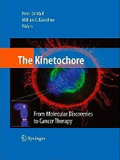 The Kinetochore:: From Molecular Discoveries to Cancer Therapy
The Kinetochore:: From Molecular Discoveries to Cancer Therapy
1st Edition
Peter De Wulf (editor), William C. Earnshaw (Editor)
Kinetochores orchestrate the faithful transmission of chromosomes from one generation to the next. Kinetochores were first depicted over 100 years ago, but kinetochore research has progressed by leaps and bounds since the first description of their constituent DNA and proteins in the 1980s.The Kinetochore: From Molecular Discoveries to Cancer Therapy presents a thorough up-to-date analysis of kinetochore and centromere composition, formation, regulation, and activity, both in mitosis and meiosis, in humans and “model” eukaryotic species, and at natural and mutant neocentromeres. Recently initiated translational research on kinetochores is also discussed as kinetochores are being mined as a very rich target for the next generations of anti-cancer drugs.
 Mitosis: Molecules and Mechanisms
Mitosis: Molecules and Mechanisms
1st Edition
J. S. Hyams (Editor), B. R. Brinkley (Editor)
Mitosis is one of the most fundamental processes in living cells, being common to all eukaryotes, from the simplest plants to the most complex mammals. Its understanding is relevant to virtually every area of biology, ranging from the molecular sciences of cell biology, developmental biology, and genetics to taxonomy and evolutionary studies.
Written and compiled by leading authorities, this book reviews the state of mitosis research, discussing cytological, ultrastructural, physical, genetic, and biochemical approaches, and focusing on areas of study that are currently under the most intensive investigation.
 Chromatin: Structure and Function
Chromatin: Structure and Function
3rd Edition
Alan P. Wolffe (Author)
The Third Edition of Chromatin: Structure and Function brings the reader up-to-date with the remarkable progress in chromatin research over the past three years. It has been extensively rewritten to cover new material on chromatin remodeling, histone modification, nuclear compartmentalization, DNA methylation, and transcriptional co-activators and co-repressors. The book is written in a clear and concise fashion, with 60 new illustrations. Chromatin: Structure and Function provides the reader with a concise and coherent account of the nature, structure, and assembly of chromatin and its active involvement in the processes of DNA transcription, replication and repair. This book consistently interrelates the structure of eukaryotic DNA with the nuclear processes it undergoes, and will be essential reading for students and molecular biologists who want to really understand how DNA works.
 Chromosome Bands: Patterns in the Genome
Chromosome Bands: Patterns in the Genome
1st Edition
Wendy A. Bickmore (Author), Jeffrey Craig (Author)
The ability to band chromosomes is of obvious and proven practical value in cytogenetics, but in addition, the fact that chromosomes can be banded suggests that they are highly organised structures and that this compartmentalisation reflects fundamental aspects of chromosome function and how the nucleus handles the genome. It is this facet of chromosome banding that is pursued in this book, drawing mainly on studies of mammalian chromosomes but where appropriate introducing work on chromosomes from other organisms. The subject is approached from the point of view of cell biology, which is not an area often considered by those using chromosome banding in a practical way.
Genetics
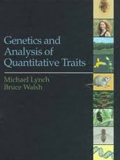 Genetics and Analysis of Quantitative Traits
Genetics and Analysis of Quantitative Traits
1st Edition
Michael Lynch (Author), Bruce Walsh (Author)
Genetics and Analysis of Quantitative Traits brings together the diverse array of theoretical and empirical applications of quantitative genetics under one cover, in a way that is both comprehensive and accessible to anyone with a rudimentary understanding of statistics and genetics. What was originally envisioned as a single text has now become two, with the focus of this first book being on the basic biology and methods of analysis of quantitative characters. (The second book, Evolution and Selection of Quantitative Traits, will address the basic principles that govern the evolutionary dynamics of quantitative characters under the forces of mutation, random genetic drift, and natural and/or artificial selection, integrating the theory of evolution of such characters with existing empirical data from natural and domesticated plant and animal populations.) Written as a general text in quantitative genetics, the book will also be useful as a basic reference for the seasoned professional. Throughout, central theoretical concepts are developed from first principles. To aid the less statistically sophisticated reader, several chapters and appendices focus on the basic statistical tools needed to digest the book. Wherever possible, theoretical and analytical concepts are illustrated with empirical examples from diverse settings.
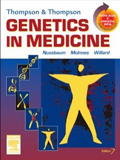 Genetics in Medicine
Genetics in Medicine
7th Edition
Robert Nussbaum MD (Author), Roderick R. McInnes MD PhD FRS(C) (Author), Huntington F. Willard PhD (Author)
Emphasizing genes and molecular mechanisms operating in human diseases, this sixth edition textbook introduces the fundamental principles of human genetics. Twenty chapters cover the chromosomal basis of heredity, structure and function of genes and chromosomes, tools of molecular genetics, patterns of single-gene inheritance, genetic variation in individuals and populations, gene mapping, principles of clinical cytogenetics, and disorders of the autosomes and the sex chromosomes. New to this edition is a set of clinical case studies detailing general principles of disease inheritance, pathogenesis, diagnosis, management, and counseling. Annotation c. Book News, Inc., Portland, OR (booknews.com)
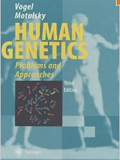 Human Genetics
Human Genetics
3rd Edition
Friedrich Vogel (Author), Arno G. Motulsky (Author)
Institut fur Humangenetik und Anthropologie, Heidelberg, Germany. Third edition of an extensive textbook on the concepts and problems of human and medical genetics, for geneticists, biomedical researchers, physicians, and epidemiologists. Previous edition 1986. Emphasizes molecular concepts and techniques.
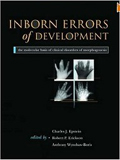 Inborn Errors of Development
Inborn Errors of Development
1st Edition
Charles J. Epstein M.D. (Editor), Robert P. Erickson M.D. (Editor), Anthony Wynshaw-Boris M.D. (Editor)
Honored by the Association of American Publishers as the Best Medical Book of 2004, Inborn Errors is the definitive work on genetically caused abnormalities of human development. Despite the explosion in genetic advances, the causes of two-thirds of all birth defects remain unknown. However, we are on the brink of a revolution in this area, andInborn Errors is at the forefront. It is the first book to connect the disease-causing gene to its biochemical pathway and to the structural/functional disorder. Mutations of the gene, the clinical picture, genetic counseling and prognosis, and any known treatments are discussed. For medical geneticists, genetic counselors, pediatricians, and developmental biologists, the book is a unique and groundbreaking reference.
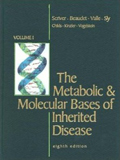 The Metabolic and Molecular Bases of Inherited Disease
The Metabolic and Molecular Bases of Inherited Disease
8th Edition
Charles R. Scriver (Editor), William S. Sly (Editor), Barton Childs (Author), Arthur L. Beaudet (Author), David Valle (Author), Kenneth W. Kinzler (Author), Bert Vogelstein (Author)
This edition of a classic text, which has had to expand in synchrony with the ballooning of medical genetics, is substantially a new book. The opening nine chapters are a detailed and sweeping landscape of genetic perspectives with insights for all of medicine. An especially appealing new chapter is the second one, “Logic of Disease” by Barton Childs; it is a thoughtful reflection with a striking comparison of “Oslerian” and “Garrodian” medicines. Its essence is caught in Childs’s epigrammatic “The best of all worlds is attained in the doctor who cleaves to the Oslerian ideal in practice and the Garrodian in thinking.” This chapter, a masterpiece on how to think anew about disease and individuality in our time, should be compulsory reading for all medical students when they start their studies and, again, just before they leave with diplomas in hand. The opening chapter is a highly readable and notably clear summary of relevant biology for the clinician in molecular genetics and biochemistry. The sections on particular diseases and disorders include many new and heavily revised chapters. The eminence of “MMBID-7”, as the editors refer to their magnum opus, is again justified; this book must be in any medical library that aims to fully represent contemporary medicine.
Copyright ©2004 by the American College of Physicians
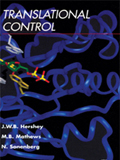 Translational Control
Translational Control
1st Edition
JWB Hersey, MB Mathews, N. Sonenberg
Critical Acclaim for Translational Control
Reading any one of the relatively few teaching texts that aim to comprehensively cover the area of gene expression and its regulation will leave today’s student with the misguided impression that a gene is only regulated at the level of transcription initiation, with just a few odd ‘exceptions to the rule’ in which a post-transcriptional mechanism might come into play. That this impression is a misguided one is amply illustrated by this excellent addition to a long line of outstanding Cold Spring Harbor monographs… .The editors have assembled an authoritative volume, which focuses primarily on gene control at the level of translation, and contains contributions from many of the leading researchers. … By reading any one of the 26 chapters, the reader will be immediately aware that transcription is not the “be all and end all’ of gene control. Thus, a gene might be efficiently transcribed and the resulting transcript correctly processed, yet that transcript might not be immediately available for translation on cytoplasmic ribosomes.
This is an important volume representing the first serious attempt to assemble a truly comprehensive, yet accessible, treatise on this rapidly emerging field.”Trends in Biochemical Sciences”.
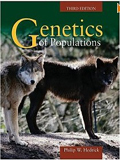 Genetics of Populations
Genetics of Populations
3rd Edition
Philip W. Hedrick (Author)
The study of population genetics is one of the keys to understanding the evolutionary process. Written by a leading expert in the field, Genetics of Populations, Third Edition, is the most current and comprehensive introduction to the field for advanced undergraduate and graduate students, and researchers in genetics, evolution, conservation, and related fields. In the past several years, interest in the application of population genetics principles to new molecular data has greatly increased, and Dr. Philip Hedrick’s new edition keeps pace with this dynamic area of study by emphasizing this recent shift.
This text integrates coverage of theoretical issues with a clear presentation of experimental population genetics and empirical data. By drawing examples from both recent and classic studies, and by using a variety of organisms to illustrate the phenomena of population genetics, Genetics of Populations, Third Edition, provides students and researchers with the most comprehensive resource available.
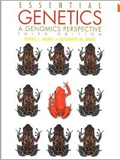 Essential Genetics
Essential Genetics
3rd Edition
Daniel L. Hartl (Author), Elizabeth Jones (Author)
Harvard Univ., Boston, MA. Textbook designed for shorter, less comprehensive introductory courses in genetics. Covers basic processes of gene transmission, regulation, mutation, and expression in a clear manner. Abundant color illustrations are included.
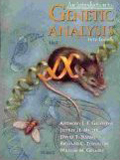 An Introduction to Genetics Analysis
An Introduction to Genetics Analysis
5th Edition
Anthony J. F. Griffiths (Author), Jeffrey H. Miller (Author), David T. Suzuki, Richard C. Lewontin (Author), William M. Gelbart (Author)
A revised and updated fifth edition containing an additional chapter on the impact genetics has on our daily lives. The book reviews the basic concepts of cell and molecular biology with increased coverage of DNA replication and protein synthesis. At the end of ecery chapter a new solved problem that integrates seceral genetics principles appears. This will show students how genetic principles work together to solve problmes an will give students practice reapplying principles learned earlier. Additional to this text one can also aquire a study guide/solutions manual, overhead transparencies and printed and computerized test banks for the IBM or MAC.
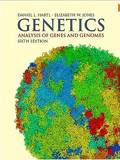 Genetics: Analysis of Genes and Genomes
Genetics: Analysis of Genes and Genomes
6th Edition
Daniel L. Hartl (Author), Elozabeth W. Jones (Author)
Genetics: Analysis of Genes and Genomes, Sixth Edition by Hartl and Jones presents the modern world of genetics; treating classical, molecular, and population genetics as unified subdisciplines in a field that, even in our post-genomic era, still goes by the name “genetics.” This approach to teaching genetics is a logical progression in a time when the various subdisciplines of genetics are so closely interwoven.
Written by two renowned authorities in the field, Genetics, Sixth Edition provides the most current, clear, comprehensive, and balanced introduction to genetics and genomics at the college level. It treats transmission genetics, molecular genetics, and evolutionary genetics as fully integrated subjects, and provides students with an unprecedented understanding of the basic processes of gene transmission, mutation, expression, and regulation. The text also explores the connections between modern and historical experimental methods used by geneticists, and offers valuable insight into the important historical and social context of genetics and genomics.
 Experiments in Molecular Genetics
Experiments in Molecular Genetics
1st Edition
Jeffrey H. Miller
Sixty-two experiments are set forth in step-by-step detail, including lists of required materials and complete characterization of the 79 strains of E. coli used. For additional experiments, see the sequel to this volume, A Short Course in Bacterial Genetics.
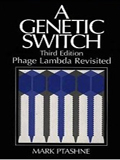 A Genetic Switch
A Genetic Switch
3rd Edition
Mark Ptashne (Author)
The first edition of Mark Ptashne’s 1986 book describing the principles of gene regulation in phage lambda became a classic in both content and form, setting a standard of clarity and precise prose that has rarely been bettered. This edition is a reprint of the original text, together with a new chapter updating the story to 2004. Among the striking new developments are recent findings on long–range interactions between proteins bound to widely separated sites on the phage genome, and a detailed description of how gene activation works.
 Drosophila: A Practical Approach
Drosophila: A Practical Approach
2nd Eidtion
D. B. Roberts (editor)
Drosophila–the scientist’s favorite laboratory organism–is a key subject for studying genetics, development, and behavior. The second edition of this popular hands-on guide brings the methodology up-to-date, with contributions from the leading researchers in the field.
Immunology
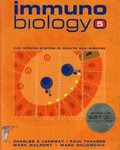 Immunobiology: The Immune System in Health and Disease
Immunobiology: The Immune System in Health and Disease
5th Edition
Paul Travers (Author), Mark Walport (Author), J. Donald Capra (Author), Charles Janeway
Charles Janeway (Author, Editor)
This book is intended as an introductory text for use in immunology courses for medical students, advanced undergraduate biology students, graduate students, and scientists in other fields who want to know more about the immune system. It attempts to present the field of immunology from a consistent viewpoint, that of the host’s interaction with an environment containing many species of potentially harmful microbes. The justification for this approach is that the absence of one or more components of the immune system is virtually always made clear by an increased susceptibility to one or more specific infections. Thus, first and foremost, the immune system exists to protect the host from infection, and its evolutionary history must have been shaped largely by this challenge. Other aspects of immunology, such as allergy, autoimmunity, graft rejection, and immunity to tumors, are treated as variations on this basic protective function. In these cases the nature of the antigen is the major variable.
 Immunobiology 7
Immunobiology 7
7th Edition
Kenneth M. Murphy (Author), Paul Travers (Author), Mark Walport (Author)
Janeway’s Immunobiology, Seventh Edition is an introductory text for use in immunology courses for undergraduates, graduate students and medical students. It guides the reader through the immune system in all its aspects – from the first engagement of innate immunity to the generation of the adaptive immune response and its clinical consequences. The Seventh Edition has been comprehensively updated throughout, and includes new information on topics such as NK cells, Toll-like receptors, AID, viral evasins, mucosal immunity, and celiac disease, to name a few. Each copy of the book includes a revised CD-ROM, Immunobiology Interactive, which contains animations and videos with voiceover narration, as well as the figures from the text for presentation purposes. Janeway’s Immunobiology continues to set the standard for currency and authority with its clear writing style and organization, full-color art program, scientific accuracy and consistent viewpoint – that of the host’s interaction with an environment containing many species of potentially harmful microorganisms.
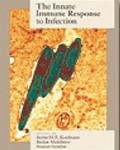 The Innate Immune Response to Infection
The Innate Immune Response to Infection
1st
Stegan H. E. Kaufmann (Editor), Ruslan Medzhitov (Editor), Siamon Gordon (Editor)
The Innate Immune Response to Infection delivers a timely, state-of-the-art review of the innate immune system, utilizing the most current concepts of cellular and molecular biology. Unique in its presentation, this new volume covers all aspects of innate immunity with an emphasis on response to infectious agents. It is a valuable reference source for scientists and students active in all areas of immunology and microbiology, as well as virology, parasitology, and infectious diseases.
Written by experts in the field, the book focuses on evolutionary aspects, describing the major cells, humoral factors, and effector responses central to innate immunity and its important relation to acquired immunity. In-depth treatment is given to the performance of the innate immune system in various situations, including bacterial, viral, fungal, and parasitic infection.
Infectious Diseases
 Infectious Diseases
Infectious Diseases
2nd Edition
Jonathan Cohen M Sc FRCP FRCPath FRCPE FMedSci (Author), William G. Powderly MD (Author)
A clinical focus, reader-friendly format, and international scope make this landmark, two-volume reference unique among encyclopedic infectious disease resources. More than 300 worldwide experts cover all aspects of the investigation, diagnosis, and clinical management of every infectious condition. Abundant “Practice Points” convey valuable clinical pearls from the authors. The comprehensively updated 2nd Edition features an even more geographically diverse set of contributors than its predecessor, as well as brand-new information on nosocomial infections, HIV/AIDS, and many other timely topics.
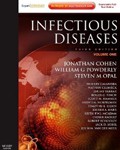 Infectious Diseases: Expert Consult
Infectious Diseases: Expert Consult
3rd Edition
Jonathan Cohen M Sc FRCP FRCPath FRCPE FMedSci (Editor), William G. Powderly MD (Editor), Steven M. Opal MD (Editor)
This book provides comprehensive, practical, highly visual guidance to help you effectively overcome the latest clinical infectious disease challenges. The comprehensively updated 3rd Edition features brand-new information on new strains of the swine (H1N1) and avian influenza viruses, SARS, nosocomial infections, HIV/AIDS, and many other timely topics. Online access at expertconsult.com lets you reference the complete contents from any computer. Two volume set, each able to be checked out separately.
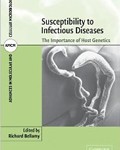 Susceptibility to Infectious Diseases
Susceptibility to Infectious Diseases
1st Edition
Richard Bellamy (Editor)
In the last fifteen years, substantial progress has been made in identifying why some people are particularly susceptible to specific infectious diseases. Extensive evidence has accumulated that host genes are important determinants of the outcome of infection for many common pathogens. This book summarizes advances that have been made in understanding the complexity of host genetic susceptibility. The diseases covered include those of great public health importance such as malaria and HIV, and those of topical interest such as Creutzfeldt-Jakob disease. Many different techniques have been used to identify host genes involved in infectious disease susceptibility. Each chapter describes how these discoveries were made and the book is therefore useful to anyone planning genetic studies on a multi-factorial disease, regardless of whether it has an infectious etiology.
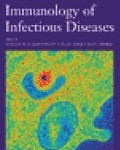 Immunology of Infectious Diseases
Immunology of Infectious Diseases
1st Edition
Stefan Kaufmann (Editor), Alan Sher (Editor), Rafi Ahmed (Editor)
This important volume offers an integrated view of the principal aspects of immune response to all types of infectious agents, with an emphasis on the immune system as a host defense system. The various infectious agents and diseases are integrated under general topics rather than treated in separate chapters. The book illustrates how the dialogue between different types of pathogens and the host immune system, as well as the cross talk between the different members of the immune response, works. Immunology of Infectious Diseases is valuable reading for microbiologists interested in pathogenesis and immunology; clinicians with an interest in immunology, virology, vaccine development, infectious diseases, bacteriology, parasitology, pathology, and cell biology; and immunologists wanting to expand their knowledge of infectious diseases and their causative agents.
Microbiology
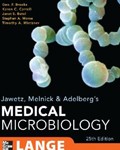 Jawetz, Melnick, & Adelberg’s Medical Microbiology
Jawetz, Melnick, & Adelberg’s Medical Microbiology
25th Edition
Geo. Brooks (Author), Karen C. Carroll (Author), Janet Butel (Author), Stephen Morse (Author), Timothy Mietzner (Author)
Linking fundamental principles with the diagnosis and treatment of microbial infections, this classic text delivers an essential overview of the roles microorganisms play in human health and illness. In addition to the brief descriptions of the organisms, you’ll find vital perspectives on pathogenesis, diagnostic laboratory tests, clinical findings, treatment, and epidemiology.
The book introduces you to basic clinical microbiology through the fields of bacteriology, virology, mycology, and parasitology, giving you a far-reaching yet student-friendly review of the discipline. All chapters have been extensively revised to reflect the tremendous expansion of medical knowledge afforded by molecular mechanisms, advances in our understanding of microbial pathogenesis, and the discovery of unusual pathogens.
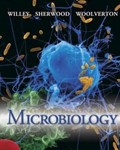 Prescott/Harley/Klein’s Microbiology
Prescott/Harley/Klein’s Microbiology
7th Edition
Joanne Willey (Author), Linda Sherwood (Author), Chris Woolverton (Author)
The brand new author team of Prescott, Harley and Klein’s Microbiology continues the tradition of past editions by providing a balanced, comprehensive introduction to all major areas of microbiology. Because of this balance, the Seventh Edition of Microbiology is appropriate for microbiology majors and mixed majors courses. The new authors have focused on readability, artwork, and the integration of several key themes (including evolution, ecology and diversity) throughout the text, making an already superior text even better.
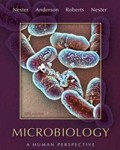 Microbiology: A Human Perspective
Microbiology: A Human Perspective
5th Edition
Eugene Nester (Author), Denise Anderson (Author), Jr.,C. Evans Roberts (Author), Martha Nester (Author)
Appropriate for the non-major/allied health student, this authoritative text carefully explains the fundamentals of microbiology, providing a general overview of the principles followed by more detailed explanations. With its clear and concise writing style, Microbiology: A Human Perspectiveoffers modern coverage on such topics as genomics, biofilms, and quorum sensing. A body systems approach is used in the coverage of diseases.
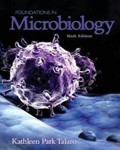 Foundations in Microbiology
Foundations in Microbiology
6th Edition
Kathleen Park Talaro (Author)
Written with the non-major/allied health student in mind,Foundations in Microbiology offers an engaging and accessible writing style through the use of tools such as case studies and analogies to thoroughly explain difficult microbiology concepts. A taxonomic approach is used for the study of pathogens.
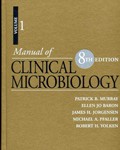 Manual of Clinical Microbiology
Manual of Clinical Microbiology
8th Edition
Patrick R. Murray, PhD (Editor), Ellen Jo Baron (Editor), James H. Jorgensen (Editor), Michael A. Pfaller (Editor), Robert H. Yolken (Editor)
Manual of Clinical Microbiology has become established as a primary reference for staff in clinical microbiology laboratories around the world.
Two volume set, each able to be individually checked out.
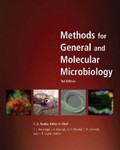 Methods for General and Molecular Microbiology
Methods for General and Molecular Microbiology
3rd Edition
C. A. Reddy (Editor), T. J. Beveridge (Editor), J. A. Breznak (Editor), G. A. Marzluf (Editor), T. M. Schmidt (Editor)
This volume is a state-of-the-art revision of the previously published Methods for General and Molecular Bacteriology. This new, expanded edition offers comprehensive coverage of methods and includes archaea and filamentous fungi, in addition to bacteria.
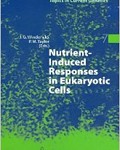 Nutrient-induced Responses in Eukaryotic Cells
Nutrient-induced Responses in Eukaryotic Cells
1st Edition
Joris Winderickx (Editor), Peter M. Taylor (Editor)
Provides detailed presentation and comparison of the key nutritional regulatory mechanisms in lower as well as higher eukaryotes. Abundantly referenced. Expanded-outline format.
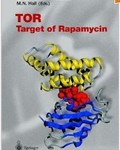 TOR: Target of Rapamycin
TOR: Target of Rapamycin
1st Edition
George Thomas (Editor), David M. Sabatini (Editor), Michael N. Hall (Editor)
TOR, the Target of Rapamycin was discovered a little over ten years ago in a genetic screen in S. cerevisiae in search of mutants resistant to the cytostatic effects of the antimycotic, rapamycin. Recent studies have placed TOR at the interface between nutrient sensing and the regulation of major anbolic and catabolic responses. The editors have gathered the leading figures in the field of TOR and its role in cellular homeostasis and human diseases.
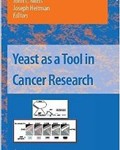 Yeast as a Tool in Cancer Research
Yeast as a Tool in Cancer Research
1st Edition
John L. Nitiss (Author, Editor), Joseph Heitman (Editor)
Yeast is an experimental system that has led to critical discoveries in cell and molecular biology. The wide range of tools available in yeast has also made it an important system in many areas relevant to cancer including anti-cancer drug discovery, mechanisms of cell cycle control, and biological responses to stress. The present volume represents a state-of-the-art description of many areas of cancer research where yeast based systems are proving particularly valuable. This volume is of particular value to cancer researchers who lack extensive experience with yeast, but are interested in current results with this highly relevant experimental system.
 A Short Course in Bacterial Genetics
A Short Course in Bacterial Genetics
1st Edition
Jeffrey H. Miller (Author)
A long-awaited sequel to Experiments in Molecular Genetics, the two-part volume A Short Course in Bacterial Genetics: A Laboratory Manual and Handbook for Escherichia coli and Related Bacteria is essential for all those doing genetic or recombinant DNA work with E. coli or similar organisms.
The Manual includes 34 detailed experiments with step-by-step protocols and easy-to-follow diagrams that demonstrate major concepts in experimental bacterial genetics. The experiments cover the essential points of mutagenesis, gene transfer, transposable elements, and gene fusions and are accomplished with a set of 44 bacterial strains.
The Handbook summarizes important information about E. coli, its genes and proteins, phage and plasmid vectors, transposable elements (including relevant sequence information), the current detailed genetic map, and the complete restriction maps of several cosmid and phage libraries of the entire genome.
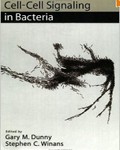 Cell-Cell Signaling in Bacteria
Cell-Cell Signaling in Bacteria
1st Edition
Gary M. Dunny (Editor), Stephen C. Winans (Editor)
This volume presents the first comprehensive review of the bacterial quorum sensing, the signaling processes involved in control of multicellular activities of microbes. It reflects the explosion of knowledge in this area, and the realization that work being done in each of the signaling systems being studied may have important implications for other organisms not closely related by phylogeny or ecological niche.
The authors, chosen for their contributions to the field, cover the salient features of most of the quorum sensing systems that have been subjected to significant experimental analysis. The major topics covered for each system include the nature of the signaling molecule, its molecular mode of action, the genetic determinants involved, and how the sensing system relates to biology of the microorganism.
Organized according to the nature of the biological phenomenon affected by signaling, Cell-Cell Signaling in Bacteria covers symbioses, genetic transfer and microbial development, and production of antimicrobial compounds. The arrangement will help readers gain a higher level of appreciation for the scope of microbial biology that is controlled by intercellular communication. Concluding chapters provide perspective on where the field has been and where it may be going.
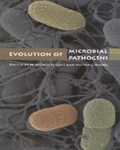 Evolution of Microbial Pathogens
Evolution of Microbial Pathogens
1st Edition
H. Steven Seifert (Editor), Victor J. Dirita (Editor)
Examines evolution of microbial pathogenesis, capitalizing on explosion of knowledge of molecular mechanisms and microbial genome sequencing; covers general concepts of microbial evolution including gene acquisition, gene loss, and concept of microbial species; presents information on broad areas of evolution of pathogenesis, including evolution of pathogenic microbes in soil, evolution of microbe-plant interactions, human specific pathogens, zoonotic infections, biofilm formation in the environment and pathogenesis, and co-evolution of pathogens and the immune system; considers evolution of pathogenic systems found in a variety of microbes or specific subsets of pathogens.
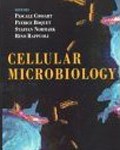 Cellular Microbiology
Cellular Microbiology
1st Edition
Pascale Cossart (Editor), Patrice Boquet (Editor), Staffan Normark (Editor), Rino Rappuoli (Editor)
Cellular Microbiology describes interactions of microbes and pathogens in the wider context of the cell properties, helping the reader to envisage different possibilities for his or her own problem while detailing known specific examples. It provides microbiologists moving into cell biology a deep understanding of the field as well as a broader knowledge of possible interaction between their favorite organism and mammalian cells. It also provides cell biologists with a comprehensive update of this emerging field.
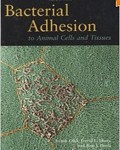 Bacterial Adhesion to Animal Cell and Tissues
Bacterial Adhesion to Animal Cell and Tissues
1st Edition
Itzhak Ofek, David L. Hasty, and Ron J. Doyle
The adhesion of bacteria to host cells is a critical event in the development of bacterial infections. Knowledge of the molecular mechanisms of this process is key to understanding an essential step in pathogenesis and to identifying potential targets for antimicrobial therapy.
This authoritative volume covers historical perspectives, general principles, methodologies, specific host cell and bacterial components associated with the process, including post-adhesion consequences, regulation of adhesin expression, and anti-adhesion therapy. The final chapter compiles, primarily in tabular format, a list of all the pathogenic bacterial species that were tested over the past ten years for their ability to adhere, the test substrata that were used, as well as the adhesins involved in the cases where they are known.
Bacterial Adhesion to Animal Cells and Tissues is an essential reference for students and investigators interested in host-pathogen interactions.
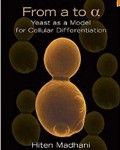 From a to a: Yeast as a Model for Cellular Differentiation
From a to a: Yeast as a Model for Cellular Differentiation
1st Edition
Hiten Madhani (Author)
…one of the most pleasantly readable books in biology…a ‘must read’ for anyone beginning to experiment with yeast. —Nature Genetics
…thoughtfully highlights the elegant and ground-breaking work performed in yeast… -Jeremy Thorner —Nature Cell Biology
The lessons learned from yeast studies are stated refreshingly in a direct, matter of fact style, without repeating in detail the experiments that led to the knowledge. A description of the text of each concept is pictorially supported by a figure, and a full one third of the space is allotted to figures all features making it one of the most pleasantly readable books in biology… This book should be a must read for anyone beginning to experiment with yeast. I suspect most experts in the yeast field are inundated with literature and selectively keep up with developments primarily in their immediate field. Reading this book will help such experts to appreciate developments in other areas of yeast research. Although yeast has only a handful of cell types, the principles learned form yeast studies are bound to help both beginners and seasoned researchers wishing to discover the underpinnings of cellular differentiation and development and the cause of disease in higher eukaryotes with vast arrays of cell types. —Nature Genetics
Madhani s book thoughtfully highlights the elegant and ground-breaking work performed in yeast, and the resulting general mechanistic insights and molecular paradigms that emerged… In the specific sense that Madhani intended as a manual for how yeast studies have led to general principles of eukaryotic cell differentiation the book succeeds admirably, and proceeds in a logical, iterative and readable manner. It benefits from simple graphics and inserts in most chapters, which present specific concepts in the context of metazoans or of human disease…as an illustrative guide of how studies in a model organism can be illuminating for large areas of biology, Madhani s book is well worth the price. —Nature Cell Biology
This concise, 115 page book nicely summarizes the major concepts regarding the mechanisms that enable yeast cells to differentiate into two different mating types: the a and the referred to in the title….By keeping a narrow focus, the book succeeds in succinctly highlighting a key set of concepts without becoming redundant. The writing will be readily accessible to advanced undergraduates and new graduate students, as well as more advanced researchers who are not yeast experts. This volume is recommended as a good starting point before embarking on a detailed study of the primary literature. —The Quarterly Review of Biology
 The Yeast Two-Hybrid System
The Yeast Two-Hybrid System
1st Edition
Paul Bartel (Editor), Stanley Fields (Editor)
Since the development of the yeast two-hybrid system by Fields and colleagues, it has developed into one of the most popular tools in biology. So much so that it has become difficult to follow the numerous modifications, improvements and multitudinous applications of the technique. The consolidation of all this information into a single volume, The Yeast Two-Hybrid System, will now make it much easier for interested researchers to come to grips with the technology. —Nature Structural Biology
The Yeast Two-Hybrid System is the first book of its kind with comprehensive coverage on both principles and practice of this powerful genetic system. For beginners, the book can serve as a useful introduction to the technique. For those who are already using one version or another of the system, the book will help to broaden their perspective. It can be used as either a lab manual or a general reference book. Almost everything one needs to know about the yeast two-hybrid system can be found in this book. —Nature Structural Biology
This book is intended for the wide range of biologists interested in using the ‘Two-Hybrid System’ to identify proteins that interact. . . . Part I contains 4 chapters that describe the most common variations of the two-hybrid system, complete with details about plasmid structures and yeast strain genotypes. There is sufficient information in these chapters for the average molecular biologist to implement the technique. . . . This book is a great resource for beginners as well as those who already use this technique, because each chapter contains its own methods section. This allows one to compare strategies that have evolved separately in different labs. Furthermore, the book was edited by Stanley Fields, the inventor of the Two-Hybrid System, and the chapters were written by the workers who helped refine the methodology. It is a useful guide written by successful practitioners. —The Quarterly Review of Biology
 Landmark Papers in Yeast Biology
Landmark Papers in Yeast Biology
1st Edition
Patrick Linder (Author, Editor), David Shore (Editor), Michael N. Hall (Editor)
Review
This book, dedicated to the late, great yeast biologist Ira Herskowitz, is a delightful collection of essays that summarizes landmark papers in key areas of the cell and molecular biology of Saccharomyces cerevisiae and Schizosaccharomyces pombe. The volume is designed as a retrospective covering the development of key areas over a period of some 60 years up to around 2002. The editors and contributors have done a terrific job in selecting the best of the best. For added value we have a DVD with PDF files of all the papers that are covered. What is often difficult but vital in teaching is to explain the historical development of an expansive field. Here is an extraordinarily helpful aid to that end, and a great read for anyone at the coal-face of yeast genetics. One of the most useful books I have seen in the field in years. Microbiology Today [T]his book contains a history of ideas and thinking within cell and molecular biology, in addition to a wealth of biological information about yeast biology. Who might be interested in reading such a book, and at whom is it aimed? One readership will be yeast scientists like myself who like to look back. However it seems that the intended readership is advanced students-presumably graduate research students-taking advanced courses in yeast biology or aspects of molecular cell biology more generally. The presence of (quite challenging) set questions based on the landmark papers at the end of each chapter certainly suggests a teaching role for the book…In my view it would be valuable for PhD students entering yeast research to acquire some understanding of the roots of the field and especially of the ideas involved, and this book provides an excellent entry point. Genetical Research —Cold Spring Harbor
The yeasts have been important experimental organisms for more than 50 years. This volume contains over 100 selected papers, in sections with introductions that describe the process of discovery and the context and significance of the research. The selections include early classics as well as recent advances in areas such as signal transduction, membrane trafficking, protein turnover, and genomics. This book is designed as a guide for a literature based course.
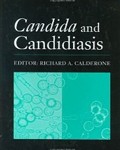 Candida and Candidiasis
Candida and Candidiasis
1st Edition
Richard Calderone
Interest in Candida as a pathogen has increased dramatically in recent years because of the importance of these organisms as disease-causing agents, particularly in the immunocompromised patient. This important new volume,Candida and Candidiasis, is the only single source of comprehensive coverage on the current state of the research. Emphasizing both basic science, including cell biology, cell structure, growth, virulence factors, and host response, and clinical science aspects, it serves as the standard reference work on Candida and candidiasis.
Sections on genomics, including molecular techniques, and virulence reflect the mycology community’s current interest in molecular pathogenesis. Concepts of immunity and drug therapy, the subjects at the core of treatment procedures, are also discussed.
Intended as a research and teaching tool to update the current thinking on these pathogens, Candida and Candidiasis will be of value to a broad range of groups, including clinicians, diagnostic laboratory technicians, and undergraduate and medical students. It is also an excellent starting point for anyone interested in pursuing research on these organisms.
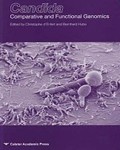 Candida: Comparative and Functional Genomics
Candida: Comparative and Functional Genomics
1st Edition
Christophe D’enfert (Editor), Bernhard Hube (Editor)
Candida species are important human pathogens that are best known for causing opportunist infections in immunocompromised hosts (eg transplant patients, AIDS sufferers, cancer patients). Infections are difficult to treat and can be very serious: 30-40% of systemic infections result in death. The sequencing of the genome of C. albicans and those of several other medically-relevant Candida species has provided a major impetus for Candida comparative and functional genomic analyses. These have provided a fascinating insight into the molecular and cellular biology of these fungi and these should pave the way for the development of more sensitive diagnostic strategies and novel antifungal therapies.
In this timely book international experts provide comprehensive and authoritative reviews of these important organisms. Topics covered include: genome dynamics of C. albicans; molecular epidemiological and population studies ofC. albicans; the parasexual cycle in C. albicans; comparative genomics of the hemiascomycetes group and of different Candida species; databases and the challenges that their curators are facing; transcriptome analysis; proteomics; molecular evolution of the genetic code; stress responses; regulation of morphogenesis; cell wall biology; interaction with host cells; analysis of gene function; antifungal resistance mechanisms and much more.Essential reading for all Candida genome and molecular biology researchers and a recommended text for scientists working on fungal genomics and molecular biology.
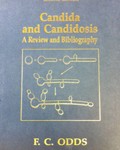 Candida and Candidosis
Candida and Candidosis
2nd Edition
F.C. Odds (Author)
A comprehensive and critical review of the medical and scientific literature on Candida infections by a leading authority in the field. Covers all aspects of the subject, including epidemiology, pathogensis and treatment, as well as the properties of the fungi that cause infections.
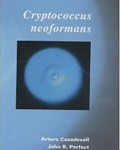 Cryptococcus Neoformans: Molecular Pathogenesis and Clinical Management
Cryptococcus Neoformans: Molecular Pathogenesis and Clinical Management
1st Edition
Arturo Casadevall (Author), John Perfect (Author)
The dramatic increase in the incidence of Cryptococcus neoformans infections calls for an up-to-date look at its biology and pathogenesis. This volume provides a comprehensive review of the ecology, epidemiology, pathogenic mechanisms, host immunity, clinical features and diagnostic conditions, and principles of treatment and prevention of this important fungal pathogen.
The only recent monograph on the subject, Cryptococcus neoformans goes beyond textbook chapters and journal articles to provide the most comprehensive, current information on basic science and clinical information relating to this fungus. The authors, investigators who have direct experience with the subject matter, provide objective data as well as interpretations and opinions.
Cryptococcus neoformans, a model organism for the understanding of disseminated mycoses, has become a major concern facing infectious disease physicians and immunocompromised patients. Now this valuable resource provides both experienced investigators and those new to the field of medical mycology an opportunity to review the vast database of knowledge on this major worldwide pathogen.
Mycology
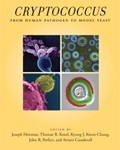 Cryptococcus: From Human Pathogen to Model Yeast
Cryptococcus: From Human Pathogen to Model Yeast
1st Edition
Joseph Heitman (Editor), Thomas R. Kozel (Editor),
Kyung J. Kwon-Chung (Editor), John R. Perfect (Editor),
Arturo Casadevall (Editor)
This book features more than 100 expert authors from around the world and offers the full range of scientific and clinical perspectives needed to create this unique, comprehensive overview of Cryptococcus. It covers both the Cryptococcus neoformans and Cryptococcus gattii species, examining in detail the life cycle, pathophysiology, molecular biology, genetics, genomics, epidemiology, immunology, and clinical management of this encapsulated yeast. Among the 44 chapters, readers will find several in-depth discussions of theC. gattii outbreak that began on Vancouver Island in 1999 and then spread into the mainland of Canada and the United States, causing infections in both humans and animals.
 Dictionary of the Fungi
Dictionary of the Fungi
10th Edition
Paul M Kirk (Author), Paul F Cannon (Author), J A Stalpers (Author)
This new edition, with more than 21,000 entries, provides the most complete listing available of generic names of fungi, their families and orders, their attributes and descriptive terms. For each genus, the authority, the date of publication, status, systematic position, number of accepted species, distribution, and key references are given. Diagnoses of families and details of orders and higher categories are included for all groups of fungi. In addition, there are biographic notes, information on well-known metabolites and mycotoxins, and concise accounts of almost all pure and applied aspects of the subject (including citations of important literature).
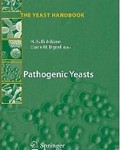 Pathogenic Yeasts (The Yeast Handbook)
Pathogenic Yeasts (The Yeast Handbook)
1st Edition
Ruth Ashbee (Editor), Elaine M. Bignell (Editor)
Mycological studies of yeasts are entering a new phase, with the sequencing of multiple fungal genomes informing our understanding of their ability to cause disease and interact with the host. At the same time, the ongoing use of traditional methods in many clinical mycology laboratories continues to provide information for the diagnosis and treatment of patients. This volume reviews various aspects of pathogenic yeasts and what is known about their molecular and cellular biology and virulence, in addition to looking at clinical and laboratory findings. As each chapter is written by a leading expert in the field, this book summarizes in one volume much of the latest research on several pathogenic yeasts, including Candida, Cryptococcus, Malassezia and yeasts of emerging importance. The importance of laboratory diagnosis, antifungal susceptibility testing, antifungal resistance and yeast diseases in animals are reviewed.
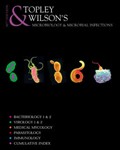 Topley’s and Wilson’s Microbiology and Microbial Infections Vol. 3: Medical Mycology
Topley’s and Wilson’s Microbiology and Microbial Infections Vol. 3: Medical Mycology
10th Edition
William G. Merz (Author), William Merz (Editor), Roderick J. Hay (Editor)
Increased interest from academic, industrial, and government scientists in the pathogenic molds and yeasts has stimulated research that has resulted in a significant expansion of our knowledge of the biology, molecular genetics, clinical expression, diagnosis, and management of fungal diseases.Medical Mycology has, therefore, been thoroughly revised and updated for this edition to include coverage of all newly identified and emerging fungal pathogens or fungal infections, innovative research, and the development of applications of new technology in the field. Medical Mycology provides comprehensive coverage of the pathogenic fungi and the diseases they cause. The volume covers the history, the biologic and molecular taxonomy of the fungal pathogens, diagnostic techniques, and integration of newer antifungal agents and strategies for the management of fungal pathogens, followed by detailed reviews of the etiological agents grouped by the principle sites that they target and the host response they elicit. Medical Mycology is an important resource for all members of the medical mycology community and associated disciplines, including research scientists, clinical laboratory scientists, infectious disease specialists and other clinicians, and epidemiologists. It will also be a powerful resource and inspiration for students interested in studying the relationship between the fungi and their hosts, leading to the diverse infections that they cause.
 Clinical Mycology
Clinical Mycology
1st Edition
William E. Dismukes (Editor), Peter G. Pappas (Editor), Jack D. Sobel (Editor)
Within the field of infectious diseases, medical mycology has experienced significant growth over the last decade. Invasive fungal infections have been increasing in many patient populations, including: those with AIDS; transplant recipients; and the elderly. As these populations grow, so does the diversity of fungal pathogens. Paralleling this development, there have been recent launches of several new antifungal drugs and therapies. Clinical Mycology offers a comprehensive review of this discipline. Organized by types of fungi, this volume covers microbiologic, epidemiologic and demographic aspects of fungal infections as well as diagnostic, clinical, therapeutic, and preventive approaches. Special patient populations are also detailed.
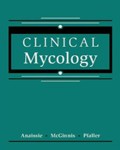 Clinical Mycology
Clinical Mycology
1st Edition
Elias J. Anaissie (Editor), Michael R. McGinnis (Editor), Michael Pfaller (Editor)
The first book of its kind to focus on the diagnosis, prevention, and treatment of patients with fungal infections, this definitive reference returns in a completely revised, full-color new edition. It presents specific recommendations for understanding, controlling, and preventing fungal infections based upon underlying principles of epidemiology and infection control policy, pathogenesis, immunology, histopathology, and laboratory diagnosis and antifungal therapy. More than 560 photographs, illustrations, and tables depict conditions as they appear in real life and equip you to identify clinical manifestations with accuracy. Expanded therapy content helps you implement the most appropriate treatment quickly, and a bonus CD-ROM-featuring all of the images from the text-enables you to enhance your electronic presentations. Includes specific recommendations for diagnosing, preventing, and treating fungal infections in various patient populations based upon underlying principles of epidemiology and infection control policy, pathogenesis, immunology, histopathology, and laboratory diagnosis and antifungal therapy. Covers etiologic agents of disease, fungal infections in special hosts such as pediatric patients and patients with cancer and HIV, infections of specific organ systems, and more, to make you aware of the special considerations involved in certain cases. Features clinically useful and reader-friendly practical tools-including algorithms, slides, graphs, pictorials, photographs, and radiographs-that better illustrate and communicate essential points, promote efficient use in a variety of clinical and academic settings, and facilitate slide making for lectures and presentations. Offers a CD-ROM containing all of the book’s images for use in your electronic presentations. Offers more clinically relevant images-more than 300 in full color for the first time-to facilitate diagnosis.Features expanded therapy-related content, including up-to-date treatment strategies and drug selection and dosing guidelines. Includes several new sections in the chapter on fungal infections in cancer patients that reflect the formidable clinical challenges these infections continue to present. Presents the work of additional international contributors who have defined many of the key issues in the field, providing more of a global perspective on the best diagnostic and management approaches. Uses a new, full-color design to enhance readability and ease of access to information.
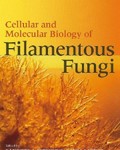 Cellular and Molecular Biology of Filamentous Fungi
Cellular and Molecular Biology of Filamentous Fungi
1st Edition
Katherine Borkovich (Editor), Daniel J. Ebbole (Editor)
Fungal cellular and molecular biology has entered an unprecedented phase of rapid growth and change. The availability of complete genome sequences coupled with the advent of new genetic and molecular tools has made possible analyses that were deemed unthinkable just 5 years ago. In the current environment, it is advantageous to have access to books that synthesize and rationalize the new information gleaned from genomics with the accumulated literature from years of research in the field, such as this text.
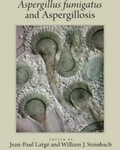 Aspergillus fumigatus and Aspergillosis
Aspergillus fumigatus and Aspergillosis
1st Edition
Jean-Paul Latge (Editor), William J. Steinbach (Editor)
This work: focuses on Aspergillus fumigatus, the most serious human pathogen of the Aspergillus genus; offers an authoritative collection of reviews from both clinical and scientific perspectives; examines the basic metabolism, genetics, structure, and biochemistry of Aspergillus fumigatus as well as the range of diseases, their diagnosis, their treatment and prophylaxis, and the variability of diseases in specific patient populations; and, offers a multidisciplinary approach to better understand the complexity of the situation, and to gain a more complete understanding of this fungus.
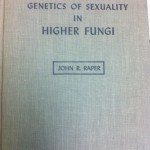 Genetics of Sexuality in Higher Fungi
Genetics of Sexuality in Higher Fungi
1st Edition
John R. Raper
 Pathogenic Fungi in Humans and Animals
Pathogenic Fungi in Humans and Animals
2nd Edition
Dexter H. Howard (Editor)
Exploring breakthroughs in fungal detection and control, this book covers fungal nomenclature, population instability, and phylogeny, as well as investigative research on Peronosporomycetes, Zygomycetes, Filamentous Ascomycetes, Basidiomycetous Yeasts, Endomycetes and Blastomycetes, and Miscellaneous Opportunistic Fungi. It offers methods to identify zoopathogenic fungi, analyze reports of putative pathogens, develop methods for detection, isolation, and characterization of pathogenic fungi, evaluate emerging strain-typing techniques, target molecules for diagnostic tests, and examine the patterns and mechanisms of genetic variation.
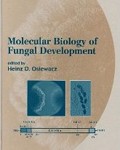 Molecular Biology of Fungal Development
Molecular Biology of Fungal Development
1st Edition
Heinz D. Osiewacz (Editor)
Gives an overview of the fundamental aspects of molecular fungal development in one comprehensive volume. Highlights different elements in the mutational and reproductive cycles of selected fungal taxa.
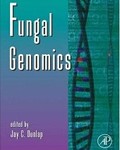 Fungal Genomics
Fungal Genomics
1st Edition
Jay C. Dunlop (Editor)
The sequencing of several fungi genomes has spurred major advances in the field. Fungal genomics has been having a pivotal impact on applied research in agriculture, food sciences, natural resource management, pharmaceuticals, and biotechnology, as well as to basic studies in the life sciences. This volume covers exciting new developments in this growth field, from genomic analysis to human fungal pathogen genomics, comparative genomics of fungi, and the genomics of fungal development.
•Includes information on aspergillus genomes
•Discusses sex and its role in virulence of human fungal pathogens
•Covers the genomic analysis of neurospora
 Pathogenic Fungi: Host Interactions and Emerging Strategies for Control
Pathogenic Fungi: Host Interactions and Emerging Strategies for Control
1st Edition
Gioconda San-Blas (Editor), Richard A. Calderone (Editor)
During the past decade we have witnessed a mushrooming of papers in the area of medical mycology; detailing major advances in areas such as genomics, molecular and cellular biology, molecular epidemiology, immune response and vaccine development, and strategies to combat infections in humans. This sheer volume of information makes it extremely difficult for the busy research scientist and/or teacher of medical mycology to keep abreast of all the latest advances. This book, together with its companion volume Pathogenic Fungi: Structural Biology and Taxonomy, brings together expert international authors who critically review current topics, and through the provision of extensive reference sections positively encourage readers to pursue the subject in greater detail.
The book is divided into two sections: “Fungal Interactions with the Host” and “Antifungal Antibiotics”. The emphasis of the first section is focused on the two-way recognition systems that exist between the host and the fungus. Experts in fungal-host interactions discuss new initiatives for alternatives to drug therapy through the development of vaccines and passive antibody therapy. In the “Antifungal Antibiotics” section, new target development, molecular modelling, and drug resistance, both at the individual organism level, and in a biofilm, are featured.
Essential reading for everyone with an interest in medical mycology including: mycologists, biotechnologists, molecular biologists, and pharmaceutical and biotechnology companies.
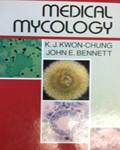 Medical Mycology
Medical Mycology
2nd Edition
K.J. Kwon-Chung, John E. Bennett
From the laboratory to the bedside, this resource offers complete and detailed coverage of fungal infections including the epidemiology, clinical manifestations, diagnosis and treatment. This contemporary guide also features the most current information available on the medical management of fungal infections in AIDS and other immunosuppressed patients.
RNA Biology
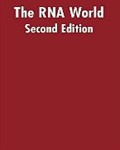 The RNA World
The RNA World
2nd Edition
Raymond F. Gesteland (Author, Editor), Thomas R. Cech (Editor), John F. Atkins (Editor)
As both an informational molecule and a catalyst, RNA may hold clues to the emergence of genetic self-replication and the origins of life. This revised and updated edition reviews the modern world of RNA and the light it sheds on a prebiotic era perhaps dominated by this versatile molecule.
Virology
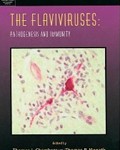 The Flaviviruses: Pathogenesis
The Flaviviruses: Pathogenesis
1st Edition
Thomas J. Chambers (Editor), Thomas P. Monath (Editor), Karl Maramorosch (Series Editor), Aaron J. Shatkin (Series Editor), Frederick A. Murphy (Series Editor)
Over 50% of known flaviviruses have been associated with human disease. The Flavivirus genus constitutes some of the most serious human pathogens including Japanese encephalitis, dengue and yellow fever. Flaviviruses are known for their complex life cycles and epidemic spread, and are considered a globally-emergent viral threat.
Pathogenesis and Immunity, the second volume of The Flaviviruses, examines the processes by which the flaviviruses cause disease, the different cytopathic effects and the associated immunopathological responses produced in their hosts.
•Comprehensive approach to the scientific disciplines needed to unravle the complexities of virus-host interactions.
•New, detailed information on the pathogenesis and immunology of the Flavivirus family.
•Descibes the technologies that have contributed to our current knowledge about the Flaviviruses
•Identifies the major problems faced in attempting to further understand the virus-host interactions that result in disease.
•An exhaustive compendium of current and past knowledge on the Flavivirus family
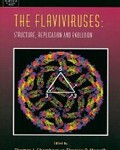 The Flaviviruses: Structure, Replication, and Evolution
The Flaviviruses: Structure, Replication, and Evolution
1st Edition
Thomas J. Chambers (Editor), Thomas P. Monath (Editor), Karl Maramorosch (Series Editor), Aaron J. Shatkin (Series Editor), Frederick A. Murphy (Series Editor)
Over 50% of known flaviviruses have been associated with human disease. The Flavivirus genus constitutes some of the most serious human pathogens including Japanese encephalitis, dengue and yellow fever. Flaviviruses are known for their complex life cycles and epidemic spread, and are considered a globally-emergent viral threat.
Structure, Replication and Evolution is the first volume of The Flaviviruses and presents the latest research covering the conceptual advances on aspects such as the characterization of virus structure, cellular receptors, mechanisms of virus entry, host and viral components of the RNA replicase.
•Includes new, detailed information on the evolution, viral structure and replication of the Flavivirus family
•The only complete reference book on a major virus family
•Descibes the technologies that have contributed to our current knowledge about Flaviviruses
•Identifies the major problems faced in understanding the virus-host interactions that result in disease
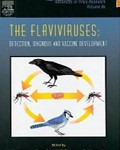 The Flaviviruses: Detection, Diagnosis and Vaccine Development
The Flaviviruses: Detection, Diagnosis and Vaccine Development
1st Edition
Thomas J. Chambers (Editor), Thomas P. Monath (Editor)
Over 50% of known flaviviruses have been associated with human disease. The Flavivirus genus constitutes some of the most serious human pathogens including Japanese encephalitis, dengue and yellow fever. Flaviviruses are known for their complex life cycles and epidemic spread, and are considered a globally-emergent viral threat.
Detection, Diagnosis and Vaccine Development, the third volume of The Flaviviruses details the current status of technologies for detection and differentiation of these viruses, their use in surveillance and outbreak investigation, and also reviews the latest clinical research.
•Comprehensive approach to the scientific disciplines needed to unravle the complexities of virus-host interactions
•Descibes the technologies that have contributed to our current knowledge about the Flaviviruses
•Identifies the major problems faced in understanding the virus-host interactins that result in disease
•An exhaustive compendium of current and past knowledge on the Flavivirus family
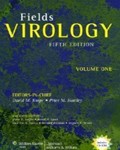 Fields Virology
Fields Virology
5th Edition
David M. Knipe (Editor), Peter M. Howley (Editor) Author(s): David M. Knipe, PhD (Author); Peter M. Howley, MD (Author); Diane E. Griffin, MD, PhD (Author); Robert A. Lamb, PhD, ScD (Author); Malcolm A. Martin, MD (Author); Bernard Roizman, ScD (Author); Stephen E. Straus, MD (Author)
Established for 20 years as the definitive virology reference, the two-volume classic Fields Virology is in its thoroughly revised, updated Fifth Edition.
More than 100 world-renowned investigators provide encyclopedic coverage of every aspect of contemporary virology, including the pathogenesis of viral diseases and the molecular biology, replication, and clinical significance of all known virus families.
This edition has many new international contributing authors and a greater emphasis on clinical relevance. Coverage includes new material on viruses and biodefense, emerging and re-emerging viruses, the human virome, mononegavirales, and henipaviruses. This edition also has a new two-color design and a revised art program unifying replication and virions images.Two volume set.